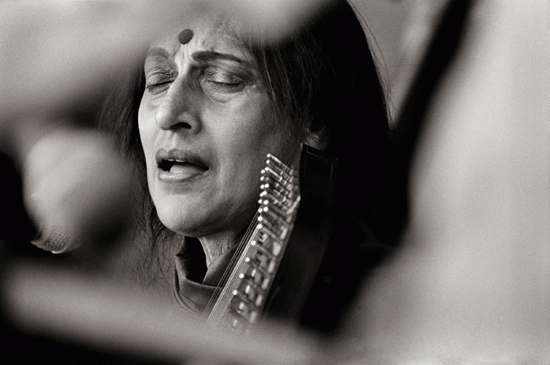
From today’s dna, my tribute to Kishori Amonkar

When I first heard Kishori Amonkar sing, I must have been in my early teens. I had grown up listening to more conventional classical singers, Bhimsen Joshi, Bade Ghulam Ali Khan, Veena Sahasrabuddhe, Amir Khan, DV Paluskar and other such greats. The first recording I heard by Kishoritai was Raga Yaman. And, honestly, I just didn’t understand it. The Yaman didn’t sound like any Yaman I heard, and her taans were just too complex for a novice listener. Mostly with classical musicians, their music sears through your consciousness the first time you hear them, and you follow their music for the rest of their lives (and yours). With Kishoritai it was different. Many years later, I realised that the problem was less with her signing, than my understanding of music, and as I began exploring more of her music, the more I began appreciating her craft, dedication, and her absolute brilliance. Listen to her Mahlars – the rain ragas – it is almost as though she was enchanting the rain clouds to pour, and often they did.
Born to the legendry singer Mogubai Kurdikar, Kishori Amonkar was trained in the Jaipur Ataruli gharana tradition of music. The tradition itself evolved from the dhrupad style – the earliest form of classical music usually spiritual or devotional in nature – to the khayal – a more recent form (about 300 years old). Khayal literally means imagination, and the practitioners of this form imagined their raags in many ways. Listen to two different ragas by any practitioner of the khayal and they will sound remarkably different, based on their mood at the time of singing, and on where the raga itself flows. Mastering a raga to be able to explore it’s limits through imagination of the raga as a multi dimensional structure, is what Kishori Amonkar did best. She would insist on pin drop silence when she sang, her concentration on her journey of raga discovery for that session complete. She was known to berate her audiences, when her concentration was broken.
But, to talk about as the doyenne of Hindustani Classical singing alone would be a disservice. She was also a musical scholar. Someone who researched and sought more information on the ragas, to be able to explore her khayal better. As a young girl she saw her mother get a raw deal in a musical world dominated by men. It was a lesson she took to heart. She never played second fiddle. In an era dominated by giants like Bhimsen Joshi, Malikarjun Mansur, Bade Ghulam Ali, Amir Khan, Kumar Gandharva – she held her own. Respect me, she commanded. And, she got that respect, easing the way for women classical musicians who came after her.
For musicians who perform at this level of excellence, there is very little distinction between their music and divinity. As they explore their music, it becomes a meditation. Kishori Tai was no different. For her, music was saadhna, and a oneness with the almighty. The joyous love for god in the early part of their singing career, evolved to a more plaintive plea for union with the almighty. When you hear the same raga being sung 25 years apart, you can tell the joy from the plea. The plea was finally heard, she has become one with the ragas.








